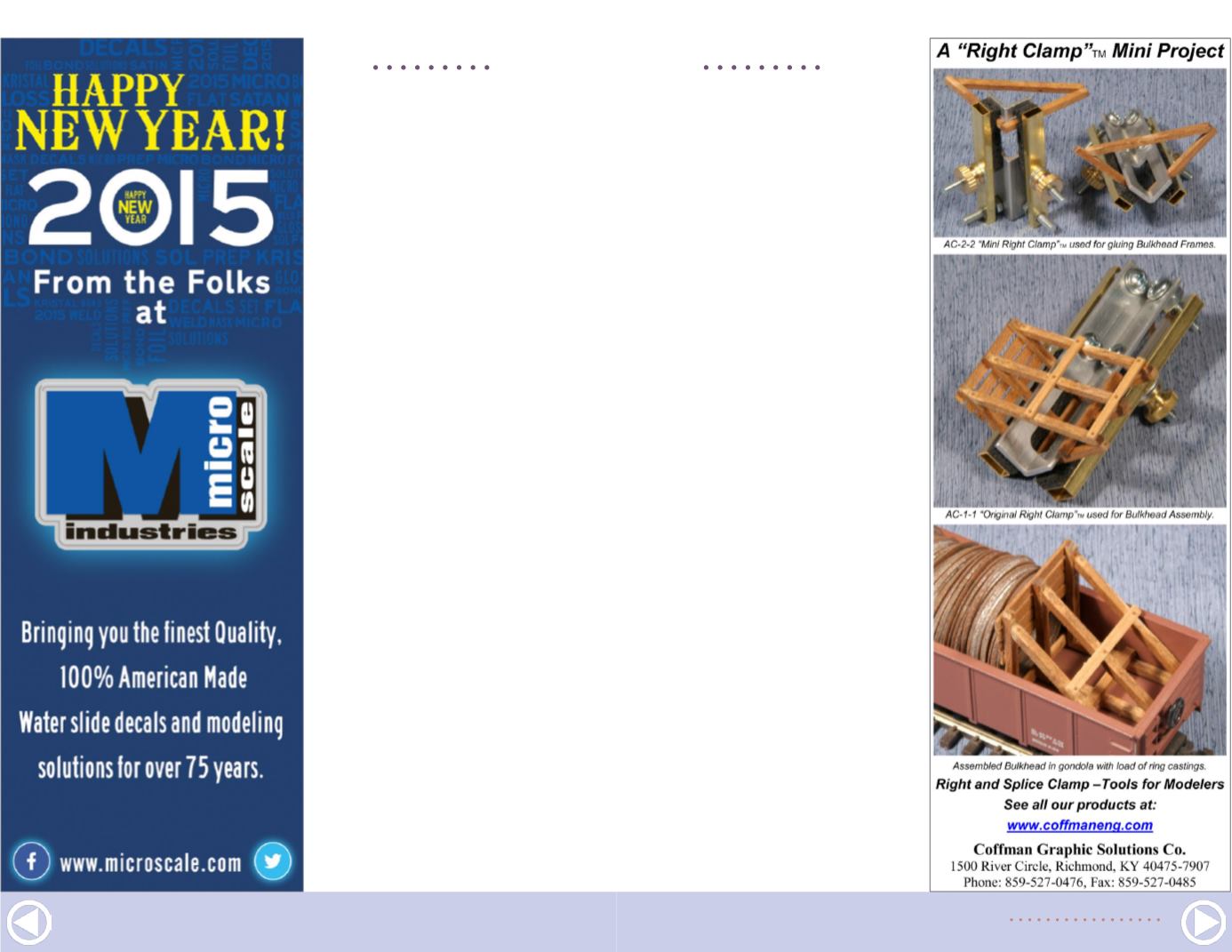
Pipopak:
The late Frank
Ellison had his layout marked
with “smiles” (scale miles) that
were about 1/10 of the scaled
down real thing. Smileposts
were located as needed. He
also had “scale time” provided
by fast clocks about six times
faster than reality. Speeds
were enforced accordingly.
Timetable was law.
Speedy yard switchers can
be either regeared (prototype
practice, by the way) or elec-
tronically limited.
I used to run several NWSL
boxcars with a flywheel built
in. Two or three of them
would put a real drag on
any train, both starting and
braking! After a couple of
spinning-wheels starts, you
learned to be gentle with the
throttle.
John Allen had another trick
to slow a “hot rodder opera-
tor:” the hot box car. It was a
regular boxcar that had a set
of rails and a steel ball to close
MRH Q-A-T |
7
an electrical circuit and light
a red. Be rough and it would
embarrass you! And then you
would lose time getting rid of
it. He used to change the car
body before an operating ses-
sion, so nobody would know
in advance which boxcar was
“the one.”
Mike Dodd:
As Pipopak
wrote of Frank Ellison, the
timetable was law.
On model railroads run-
ning under a timetable (and
possibly a fast clock), the
question of “scale” speed is
moot. Crews should run their
trains at a speed suitable to
put them into the next station
at the right time on the fast
clock. Crews soon discover
a good running speed. On
my Virginian Ry., few crews
decide to zip down the line to
the next station, only to stand
around waiting for the sched-
uled departure time. Instead,
they pace themselves, and
“scale” speeds result.
MRH Q-A-T |
8
ADVERT I SEMENT
ADVERT I SEMENT


